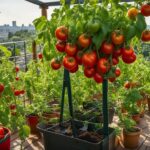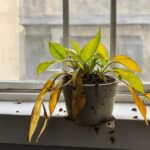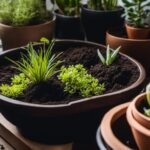Areca Palm Guide to Growing and Caring, common pests and diseases, treatment, types, Signs of Dying or Common Problems
The Areca palm, also known as Dypsis lutescens or the butterfly palm, is a popular choice among outdoor and indoor houseplants. Its lush, feathery fronds and air-purifying qualities make it a top pick for those looking to add a touch of tropical elegance to their spaces. However, like any other plant, the Areca palm requires specific care and attention to thrive.

You can also read about Types of houseplants or Indoor Plants
How to Grow and Care for Areca Palm
- Areca Palm Care– Areca palm care involves understanding its specific needs, and this includes providing the right amount of light, well-draining soil, proper watering, suitable temperature and humidity levels, and a consistent fertilization schedule. Let’s explore each of these aspects in detail:
- Light – One of the most critical factors in Areca palm care is providing the right amount of light. Areca palms thrive in bright, indirect light. They can tolerate some direct morning sun but should be shielded from harsh afternoon sunlight to prevent scorching. If you’re growing them indoors, place them Near East- or west-facing windows where they can receive filtered sunlight throughout the day. Avoid placing your plant in a south-facing window, as it can scorch the fronds and cause them to turn yellow.
- Soil- Choosing the right soil is essential for Areca palm care. They prefer a well-draining, slightly acidic potting mix that retains moisture without becoming waterlogged. A mix of peat moss, perlite or sand, and regular potting soil works well. Repot your palm every two to three years to refresh the soil and provide more space for growth.
- Water – Proper watering is crucial for Areca palms. Keep the soil consistently moist but not soggy. Water when the top inch of the soil feels dry to the touch. Overwatering can lead to root rot, while underwatering can cause the fronds to turn brown and dry out. Maintaining a balance is key to keeping your Areca palm healthy.
- Temperature and Humidity – Areca palms thrive in warm and humid conditions, mimicking their native habitat in Madagascar. They prefer temperatures between 65°F to 75°F (18°C to 24°C) during the day and slightly cooler at night. Avoid exposing them to temperatures below 50°F (10°C), as this can harm the plant. If you’re growing them indoors, try to maintain a humidity level of around 50% by misting the plant, using a humidifier, or placing a tray of water near the palm.
- Fertilizer – Regular fertilization is essential for Areca palm care. During the growing season (spring and summer), feed your palm with a balanced, water-soluble fertilizer every four to six weeks. Reduce feeding in the fall and winter when growth slows. Be cautious not to over-fertilize, as it can damage the plant. Follow the instructions on the fertilizer packaging for the correct dosage. In my article, You can also read about Homemade Organic Liquid Fertilizers for Garden
Areca Palm Propagation
Propagating Areca palms is possible but challenging, as they typically prefer to be grown from seeds. Here’s a basic overview of how to propagate them:
How to Grow Areca Palm From Seed
- Start by obtaining fresh Areca palm seeds from a reputable source.
- Soak the seeds in warm water for a day to soften the seed coat.
- Plant the seeds in a well-draining potting mix, keeping them at a depth of about 1 inch.
- Maintain warmth and humidity by covering the pot with a plastic bag or a humidity dome.
- Seed Germination may take several weeks to 2-3 months.
- Once the seedlings have grown large enough, transplant them into individual pots.
While propagating from seeds is possible, it’s essential to note that Areca palms grown from seeds can take several years to mature into full-grown plants.
How to Grow Propagation by Division:
This method involves separating an established areca palm into multiple smaller plants. Here’s how to do it:
- Select a mature areca palm with multiple stems (canes) that you want to divide.
- Carefully remove the plant from its pot or the ground, taking care not to damage the roots.
- Examine the root system and identify the natural divisions (canes) in the plant. Each division should have its own roots.
- Use a sharp, clean knife or pruning shears to separate the canes from the main plant. Make sure each division has roots and some attached foliage.
- Plant each division in its own pot or location with well-draining soil.
- Water the newly divided plants thoroughly, and place them in a location with indirect light. Over time, they will establish themselves and grow into individual plants.
You can also read Tips for Beginners to Start Gardening
Potting and Repotting Areca Palms
Potting and repotting Areca palms are vital for their overall health and growth. Here are some guidelines to consider:
- Use a pot that is 1-2 inches larger in diameter than the current one.
- Repot during the spring, when the plant is actively growing.
- Gently remove the plant from its current pot, being careful not to damage the roots.
- Place the palm in the new pot and fill with fresh potting mix.
- Water the plant thoroughly after repotting to help it settle into its new container.
Regular repotting every two to three years helps provide more space for the roots to grow and access fresh nutrients in the soil.
Common Pests & Plant Diseases and How to Treat Them
Like any plant, Areca palms can fall victim to pests and diseases. Being vigilant and taking quick action is essential to protect your plant. Here are some common issues you may encounter and how to treat them:
- Spider Mites: These tiny pests can create fine webs on the plant and cause leaves to yellow and wither. Use neem oil or insecticidal soap to treat them.
- Scale Insects: Scale insects appear as small, brown, or white bumps on the fronds. They feed on plant sap. Eliminate the undesired elements by using a cotton swab soaked in rubbing alcohol.
- Mealybugs: These insects leave a white, cottony residue on your plant and can weaken it. Remove mealybugs with a cotton swab dipped in rubbing alcohol.
- Leaf Spot: Fungal leaf spots can occur if the plant is kept in overly humid conditions. Remove affected fronds and improve ventilation to prevent further infection.
Type of Areca Palm
There are several types of Areca palms, each with its unique characteristics and features. Here are some common varieties:
- Dypsis lutescens (Butterfly Palm): This is the most popular and widely recognized Areca palm, known for its feathery, arching fronds.
- Dypsis baronii (Baron’s Areca Palm): This variety features slender, upright fronds with a graceful appearance.
- Dypsis decaryi (Triangle Palm): Named for its triangular fronds, this variety is a unique and striking choice for tropical-themed landscapes.
- Dypsis leptocheilos (Red-neck Palm): The distinctive characteristic of this palm is its furry, reddish-brown petioles.
- Dypsis lastelliana (Bamboo Palm): This palm is recognizable by its slim, bamboo-like trunks and lush, green fronds.
What Is the Sign of Dying or Common Problems With Areca Palm
When an Areca palm is in distress or dying, it may exhibit several noticeable signs. While Areca palms are generally hardy, they can face specific problems that may require immediate attention. Some of the common problems to watch out for include:
- Yellowing Fronds: Yellowing fronds can indicate overwatering or insufficient light. Adjust your care routine accordingly.
- Brown Leaf Tips: Brown tips on the fronds are often a sign of low humidity or inadequate watering. Increase humidity and ensure proper watering.
- Leaf Tip Burn: Leaf tip burn is a common issue caused by inconsistent watering or excessively dry air. To prevent it, maintain adequate humidity and water your plant regularly, ensuring that the soil remains consistently moist but not waterlogged.
- Wilting and Drooping Fronds: If the fronds are wilting and drooping, it may be due to underwatering. Water the plant promptly and ensure proper moisture levels.
How to Save Areca Plant from Dying in Winter?
During the winter, it’s crucial to adjust your care routine to help your Areca palm survive the colder months. To save your Areca palm from dying in winter:
- Reduce Watering: With lower light levels and cooler temperatures, your palm will require less water. Allow the soil to dry out slightly between waterings.
- Maintain Adequate Humidity: Indoor heating systems can lead to dry air, which can harm your palm. Use a room humidifier or mist the fronds regularly to maintain adequate humidity.
- Protect from Drafts: Position your palm away from cold drafts and heating vents, as extreme temperature fluctuations can stress the plant.
- Monitor for Pests and Diseases: Check your plant regularly for signs of pests or diseases, as these issues can worsen in the dry indoor environment of winter.
How to Save Areca Plant From Dying in Summer?
In summer, Areca palms can face challenges such as intense sunlight and increased evaporation. To protect your palm during the hotter months:
- Provide Shade: If your palm is outdoors, provide partial shade during the hottest parts of the day to prevent sunburn.
- Increase Watering: With higher temperatures, your palm may require more frequent watering. Keep the soil consistently moist, but avoid overwatering.
- Mist the Fronds: Regularly mist the fronds to maintain humidity, as hot, dry air can lead to browning of the tips.
- Monitor for Pests: The warmer weather can attract pests, so keep a close eye on your palm and address any infestations promptly.
Conclusion
Growing and caring for an Areca palm can be a rewarding experience, adding a touch of tropical beauty to your home or garden. By understanding the specific needs of these palms regarding light, soil, water, temperature, and humidity, and by being vigilant in protecting them from common pests and diseases, you can ensure they thrive. Whether you’re dealing with issues like leaf tip burn or saving your Areca palm from the challenges of winter and summer, this comprehensive guide will serve as a valuable resource to help your Areca palm flourish and remain healthy for years to come.
You can also read about Houseplants for Bathrooms with No Window and No light Space




